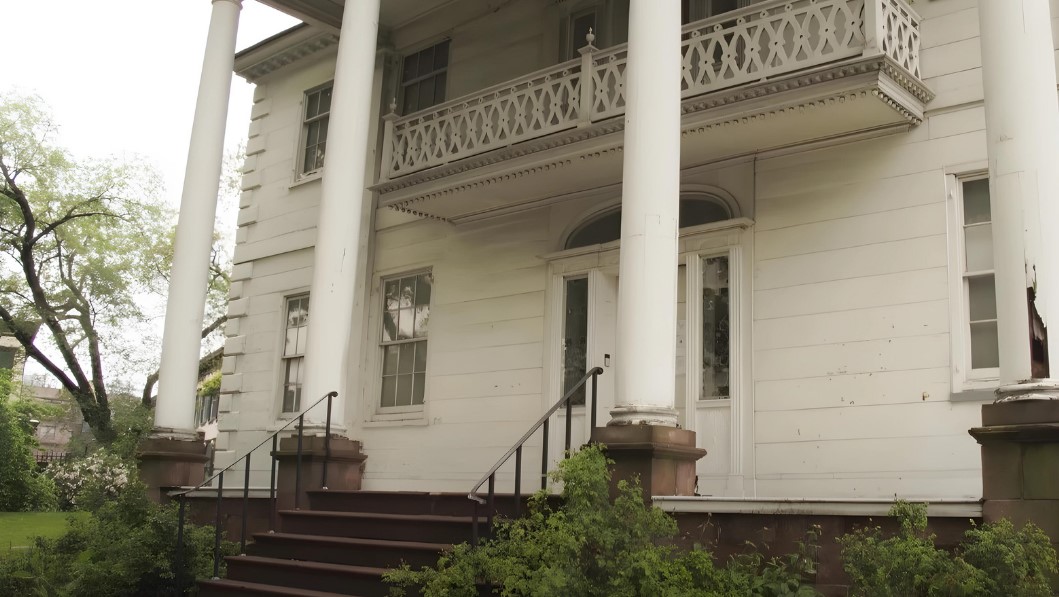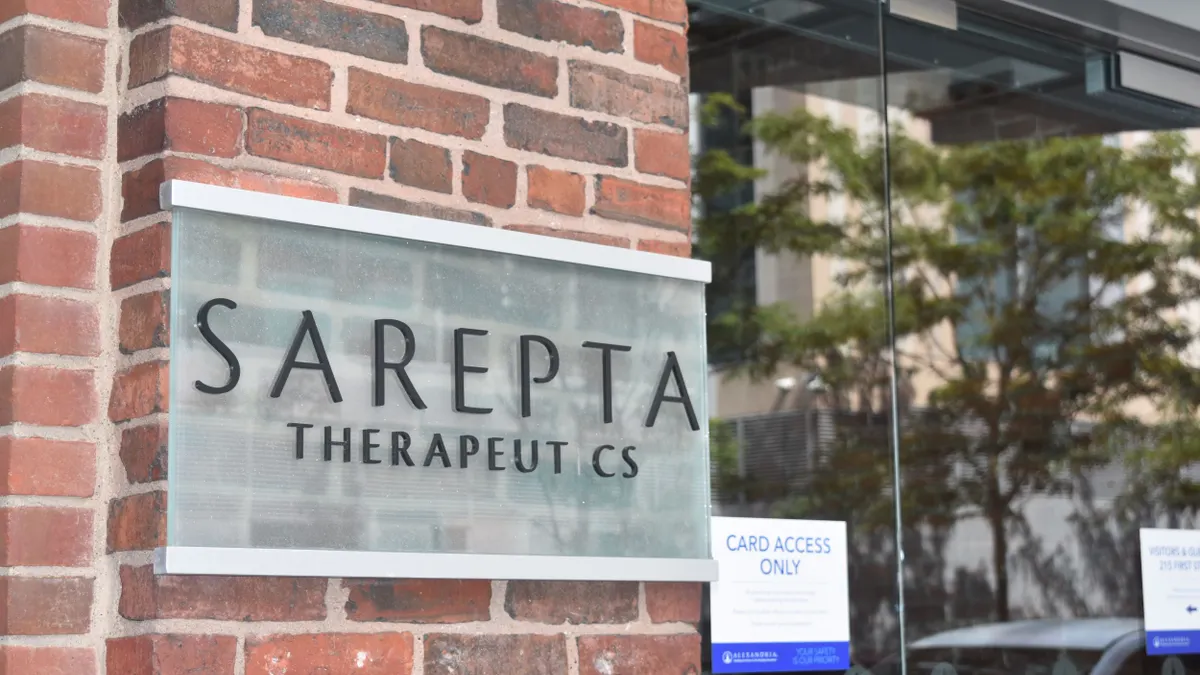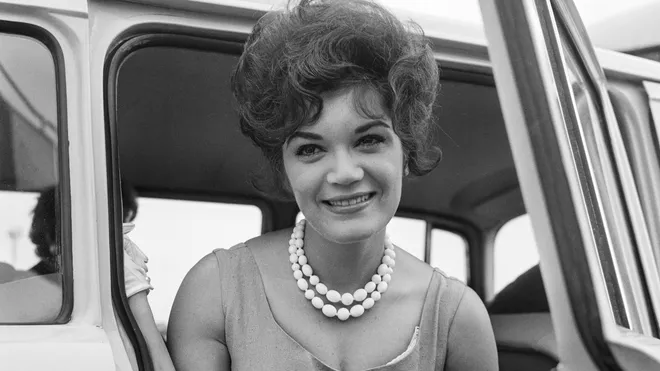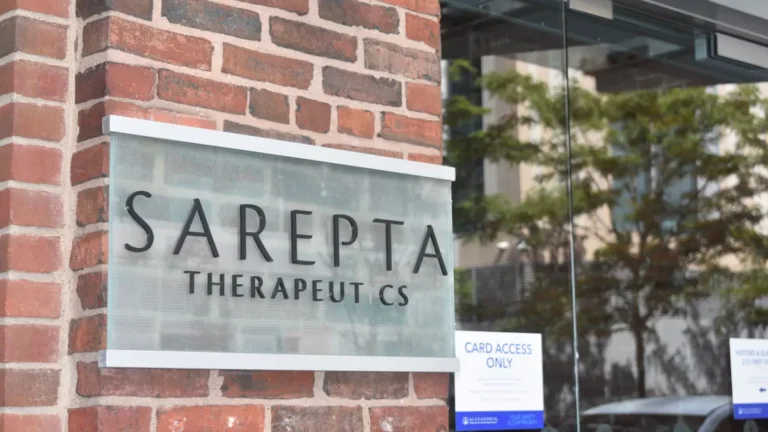New York City, famously described by ex-Mayor Philip Hone, is always under the hammer and chisel, constantly reshaping itself through endless cycles of construction and demolition.
Yet, amidst this whirlwind of change, the city clings to its deep historical roots, preserving remnants of its past when it was once known as New Netherland.
While Manhattan is often in the spotlight for its iconic landmarks, it’s actually the quieter corners of Brooklyn and Staten Island that are home to the city’s oldest treasures.
Manhattan’s own historical narrative has been somewhat muted by past fires and the relentless push for new development.
Wandering through these boroughs, one can’t help but feel a sense of connection to the 17th-century Dutch settlers, with ancient buildings standing proudly, a testament to New York’s rich and diverse heritage, amidst the modern urban sprawl.
Key Takeaways
- New York City’s oldest buildings serve as a testament to its colonial Dutch roots.
- Outer boroughs house the city’s oldest structures.
- Development pressures and past fires have shaped the distribution of historic structures.
- Architectural diversity reflects NYC’s evolution.
- Restoration projects keep historical landmarks alive.
- Preservation efforts are crucial for maintaining the continuity of the city’s architectural history.
- Historic sites offer insights into NYC’s past.
1. Brooklyn: Wyckoff Farmhouse Museum
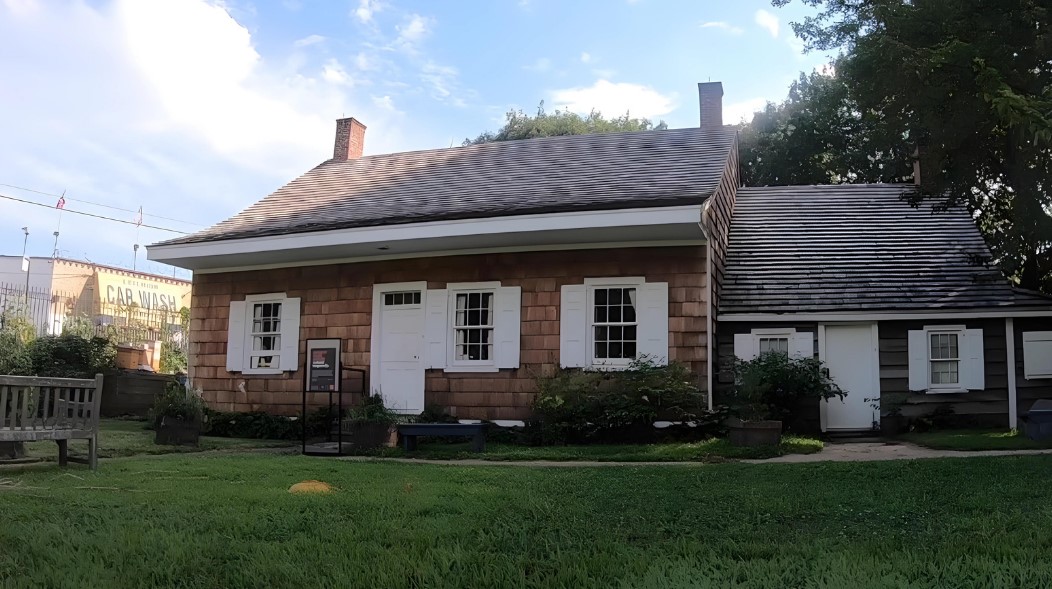
Built in 1652, The Wyckoff House is the oldest on Long Island–originally built by Dutch immigrant Pieter Claesen and his wife Grietje according to Study Country.
The Wyckoff House & Association, Inc., formed in 1937 when descendants of Pieter Claesen and Grietje gathered together to purchase and preserve their home in the face of potential demolition. The Wyckoff House Foundation gained ownership of the property in the 1960s and donated it to the NYC Parks Department.
In 1965 the house became the first structure in New York to be designated a historic landmark, and, after surviving a fire in the late 1970s, was finally restored in the early 1980s–though, regardless of the renovations, it’s the oldest surviving example of a Dutch saltbox frame house in America.
- Timing: Fridays and Saturdays, 1–4 p.m.
- Accessibility: By guided tour only
- Location: 5816 Clarendon Rd, Brooklyn, NY 11203
I loved the rustic charm and the way it preserves Dutch heritage. The guided tour was enlightening, though I wished for more interactive exhibits to bring the daily lives of the settlers to life.
2. Brooklyn: The Historical Schenck Residence
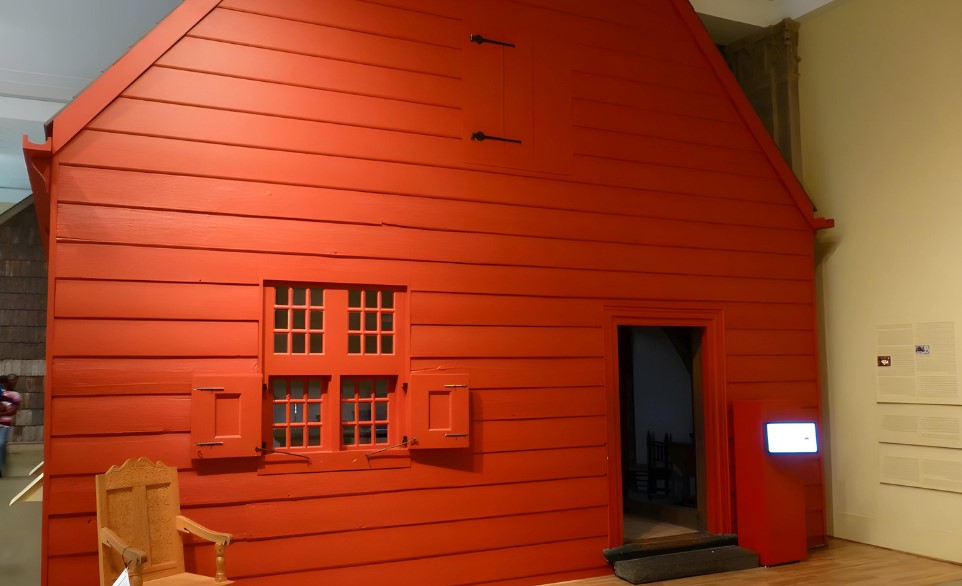
I’m always fascinated by the historical architecture, and the Schenck House in Brooklyn holds a special place as one of the borough’s oldest dwellings. Constructed around 1675, it was a prominent fixture in the Mill Basin area for nearly three centuries.
Originally a Schenck family home, the dwelling faced potential destruction before the Brooklyn Museum stepped in for its preservation in 1952.
- Year Established: Circa 1675
- Original Location: Mill Basin, Flatlands
- Relocation: Acquired by the Brooklyn Museum in 1952
- Current Use: Displayed as a Dutch period room
- Restoration Efforts: 2005 – Stripped later additions and restored to original Dutch color.
Efforts were made in the mid-20th century to restore the house’s historic integrity, which included removing later architectural modifications. A notable restoration in 2005 included repainting the house with a historically accurate shade of red, discerned from paint remnants dating back to the 17th century.
3. Queens: The Lent-Riker-Smith Homestead
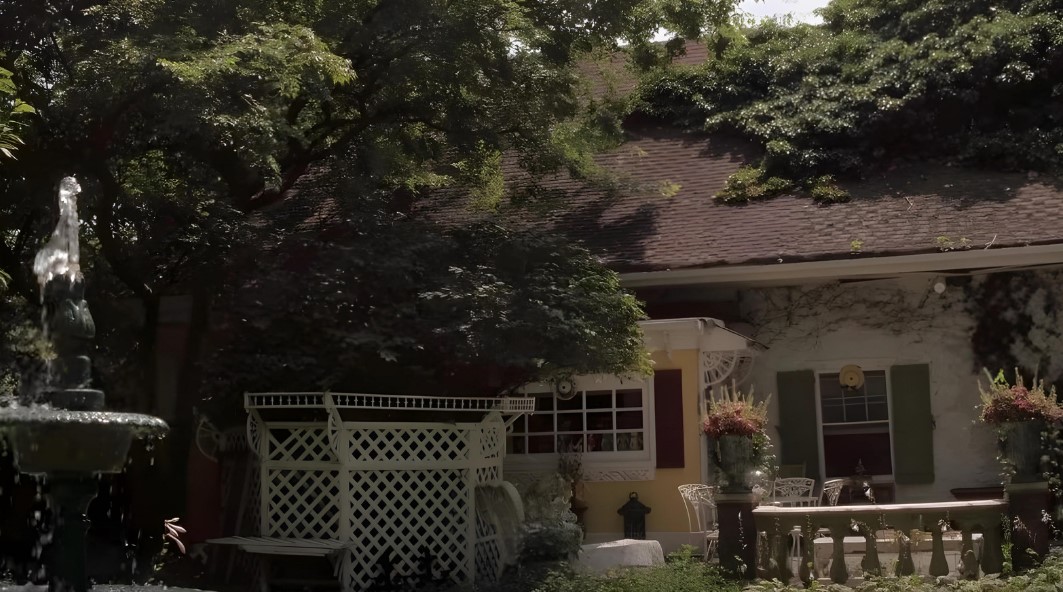
The Lent-Riker-Smith Homestead holds the distinction of being the most ancient continually inhabited residence within Queens, with its beginnings tracing back to around 1654 according to the New York Times. Initially a modest one-room structure, the structure was erected by the Riker family.
The Rikers, who also have an island bearing their name associated with a well-known penitentiary, were originally recognized as the Lents, referencing their origins in the Netherlands.
Since 1975, Michael and Marion Duckworth Smith have maintained ownership, dedicating themselves to the meticulous restoration of their historic residence. Although the homestead is private, arrangements can be made for group tours.
Historic Journey of the Homestead:
- Initial Construction: Approximately 1654
- Original Use: One-room farmhouse
- Initial Builders: Abraham Riker and family
- Previous Namesake: Lents, after Dutch hometown
Current Ownership Details:
- Owners Since: 1975
- Owners: Michael and Marion Duckworth Smith
- Restoration: Elaborate and ongoing
Public Access Information:
- Location: 78-03 19th Rd, Flushing, NY 11370
- Tour Availability: Can be organized for groups
Walking through the same rooms as George Washington was surreal. I only wished the gardens were better maintained to match the house’s historical significance.
4. The Bronx: Van Cortlandt House Museum
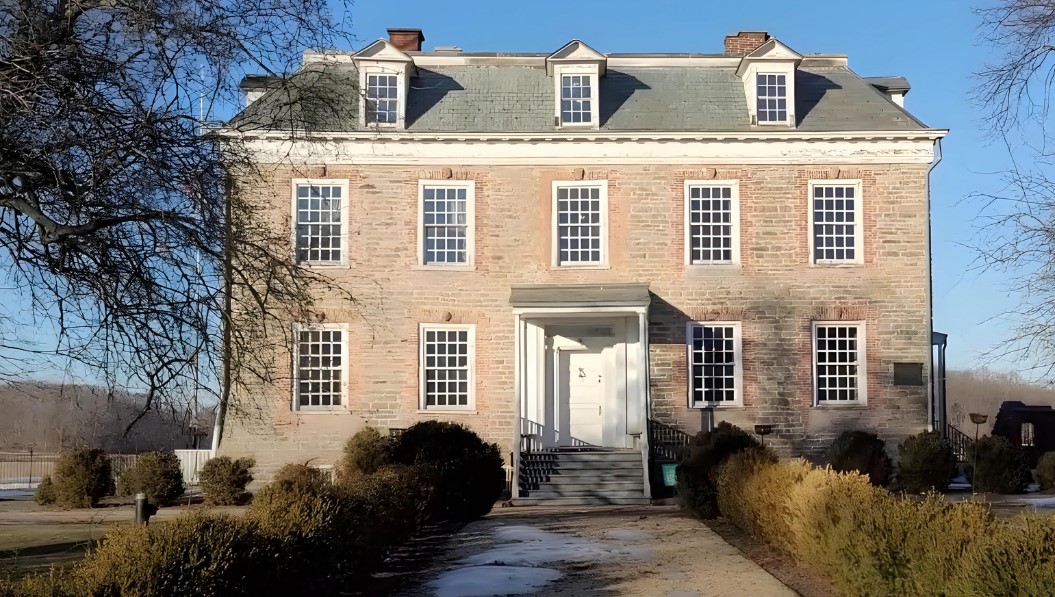
The Van Cortlandt House Museum stands as a significant historical landmark in the Bronx, dating back to the mid-18th century. It has the distinction of having sheltered George Washington and served as a strategic hideout for vital documents during the occupation of Manhattan by British forces in the American Revolutionary War.
Historical Significance:
- Established around 1748
- A testament to the prominent Van Cortlandt family
- Oloff Stevenson Van Cortlandt, original owner, founded New Amsterdam’s first brewery
- Frederick Van Cortlandt, his descendant, established the estate
Features:
- Estate included a farm, brewery, and mill
- Former mayoral residence
Visitor Experience:
- Self-guided tours available
- Explore historic house and gardens
- Van Cortlandt Park Broadway at W. 246th St., Bronx, NY 10471
Stepping into the Van Cortlandt House Museum was like walking through a portal to the Revolutionary War era. Imagining George Washington strategizing within those walls was awe-inspiring. I do wish the surrounding gardens received as much care as the house itself.
5. Manhattan: The Dyckman Farmhouse Museum
Dating back to the late 18th century, the Dyckman Farmhouse stands as a testament to Manhattan’s agrarian history. Constructed by William Dyckman as a replacement for the family’s original home lost in the Revolutionary War, this residence showcases the rustic life of Manhattan’s early settlers. After the Dyckman family tenure concluded in the 1870s, the house transitioned to rental housing before falling into neglect.
- Built ca. 1784
- Location: 4881 Broadway, New York, NY 10034
In a bid to honor their heritage, descendants Alice Dyckman Dean and Fannie Fredericka Dyckman Welch acquired and restored the residence to emulate its 1784 condition.
Presently, it welcomes visitors eager to step back in time and experience historic New York living. Visitors can explore the farmhouse on Fridays and Saturdays from 11 a.m. to 4 p.m.
6. Brooklyn: The Historical Hendrick I Lott Residence
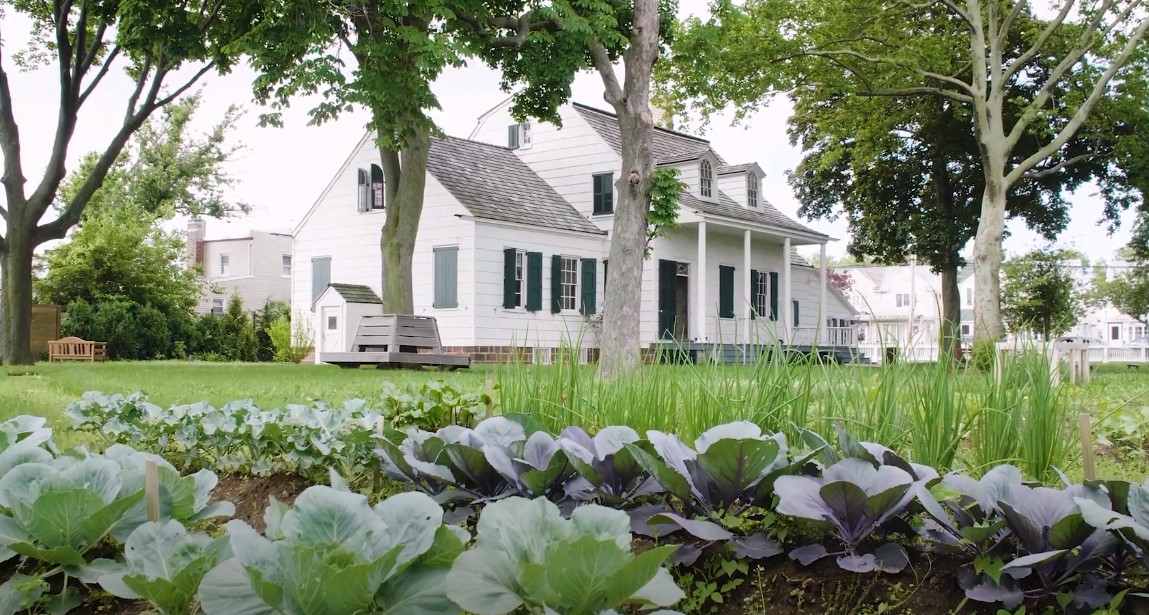
Initially established as a modest structure in the early 18th century, the house underwent significant expansion in the 1790s. The original section, dating back to around 1720, was repurposed as a kitchen when the property grew to include a more extensive farmhouse as noted by NYC Parks.
This home wasn’t merely a residence but part of a larger 200-acre farming operation that remained active into the 20th century, with the Lott family stewardship ending in 1989. Presently under the guardianship of the municipal Parks Department, the house is the subject of meticulous restoration efforts.
- Original Building: Circa 1720
- Expansion Era: 1790s
- Farm Size: 200 acres
- Last Family Owner: Passed away in 1989
- Current Administrator: City’s Parks Department
- Status: Restoration underway
7. Brooklyn’s Historical Gem: The Old Stone House
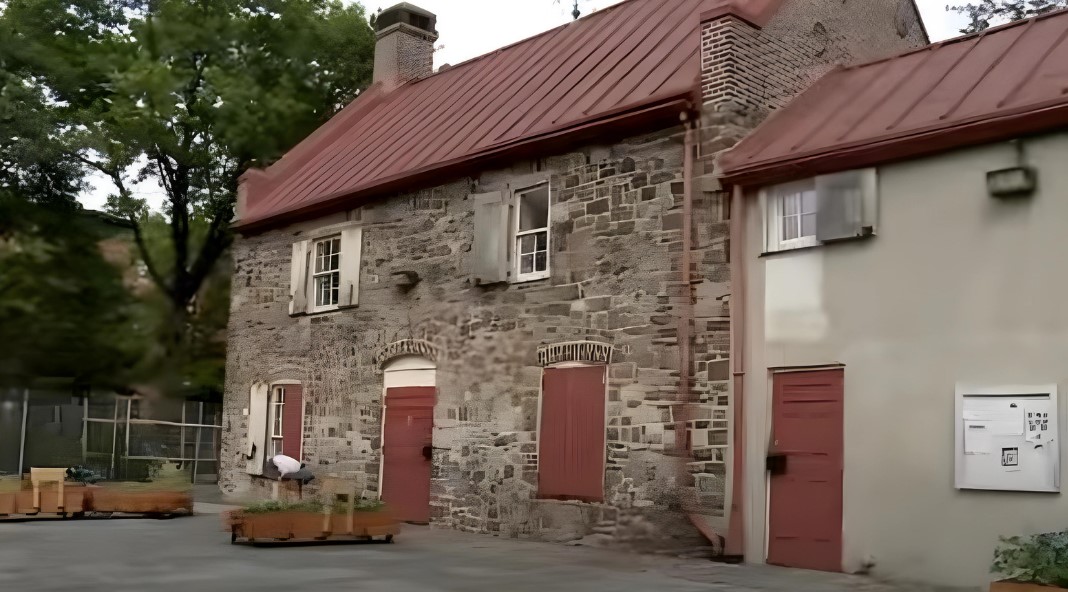
The Old Stone House in Park Slope was built in 1699 and demolished in 1897. This reconstruction, using some original material, dates to 1933 according to Macaulay Collage.
- Constructed: Originally in 1699, reconstructed in 1933
- Materials: Incorporates original elements
- Location: 336 3rd St, Brooklyn, NY 11215
- Current State: Demolished in 1897, later rebuilt
8. Queens: The Bowne House
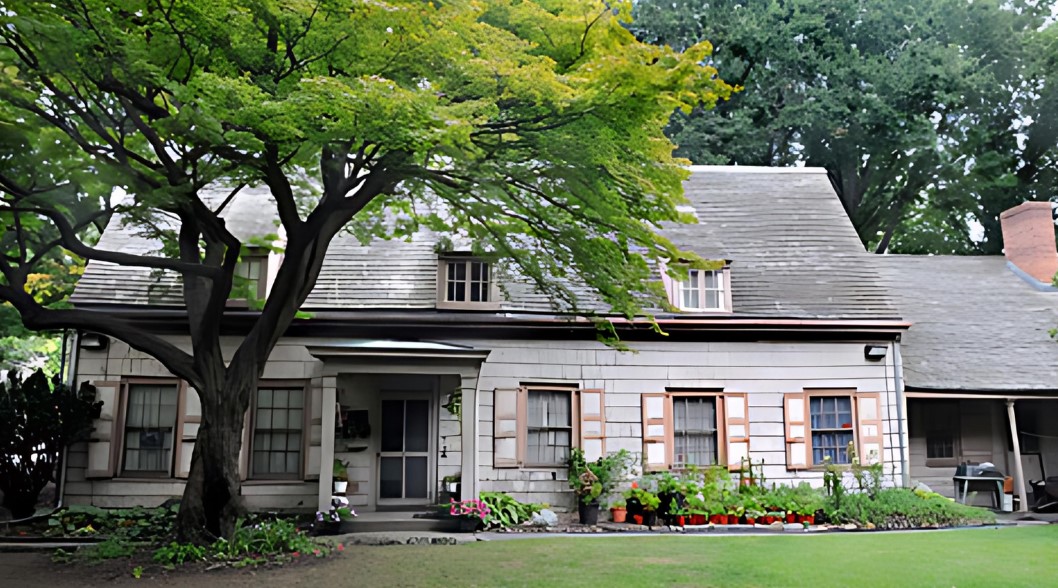
I find it fascinating that the Bowne House, dating back to approximately 1661, stands as a monolith of religious tolerance. This dwelling in Queens bore witness to John Bowne’s historic stance for religious freedom.
At a time when Dutch authorities strictly controlled religious expression, Bowne displayed extraordinary courage by allowing Quakers to gather for worship at his residence. His subsequent arrest and exile did not deter him; he successfully argued for religious autonomy in the Netherlands, leading to a landmark decision in favor of liberty of conscience.
The Bowne House’s story of religious freedom deeply moved me. Witnessing the restoration process was exciting, yet the restricted access to certain areas due to ongoing work was a bit of a letdown.
Today, the Bowne House is being carefully restored, reflecting its storied past and its importance in the fabric of American history according to Queens Library. Visitors can explore the house on Wednesdays from 1 to 4 p.m. or schedule a visit by appointment to experience a piece of the religious freedom narrative firsthand.
- Built ca. 1661
- Historical Significance: Emblem of the fight for religious freedom in the 17th century.
- Accessibility: Welcomes visitors weekly and by arrangement.
- Preservation Efforts: Undergoing extensive restoration.
- Location: 37-1 Bowne St, Flushing, NY 11354
9. Queens: Friends Meeting House
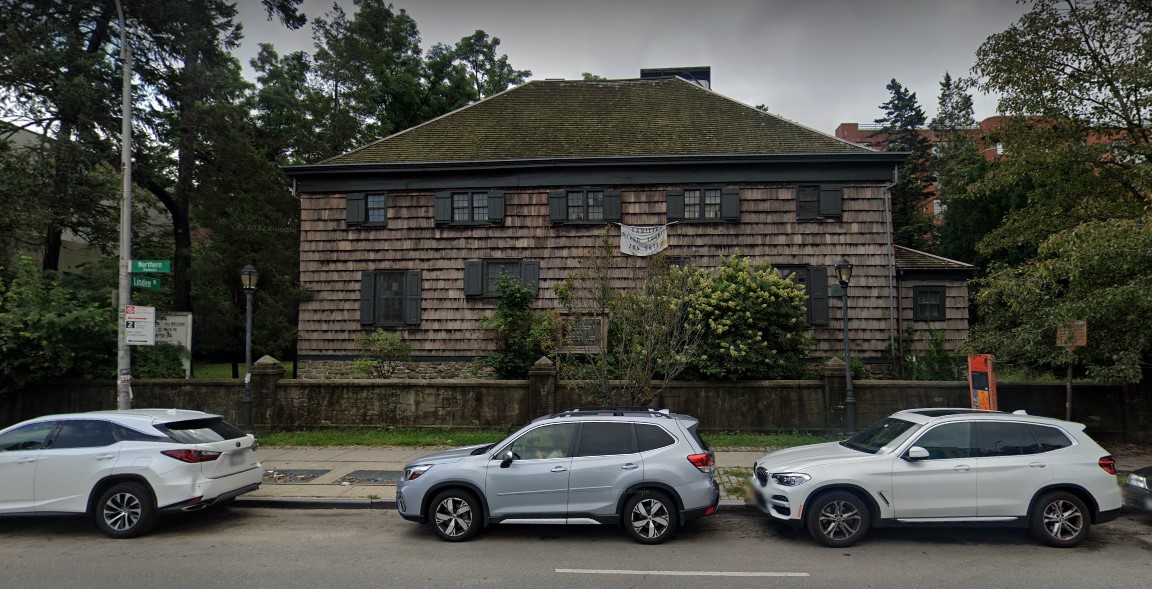
Constructed in 1694, this historical structure holds the distinction of being the oldest house of worship in New York City. Initially, local Quakers gathered on the nearby land of a prominent member, John Bowne.
His property hosted significant figures, such as George Fox, the Society of Friends’ initiator, in 1672. By 1692, adjacent land was secured to build the Meeting House, which to this day hosts weekly gatherings and offers Sunday tours post-meeting at noon.
A Quaker burial ground, donated by Bowne in 1676, also forms part of this historic site.
- Location: 137-16 Northern Blvd, Flushing, NY 11354
10. Queens: County Farm Museum
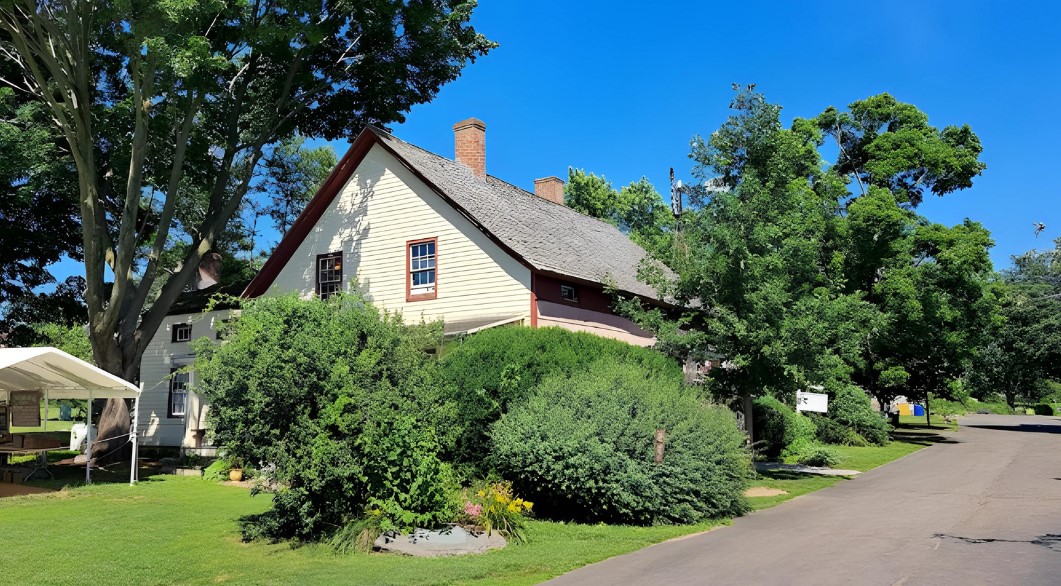
- Location: 7350 Little Neck Pkwy, Floral Park, NY 11004
- Establishment: 1697
- Significance: Oldest continuously operating farm in NYC
11. Staten Island: Billiou-Stillwell-Perine House
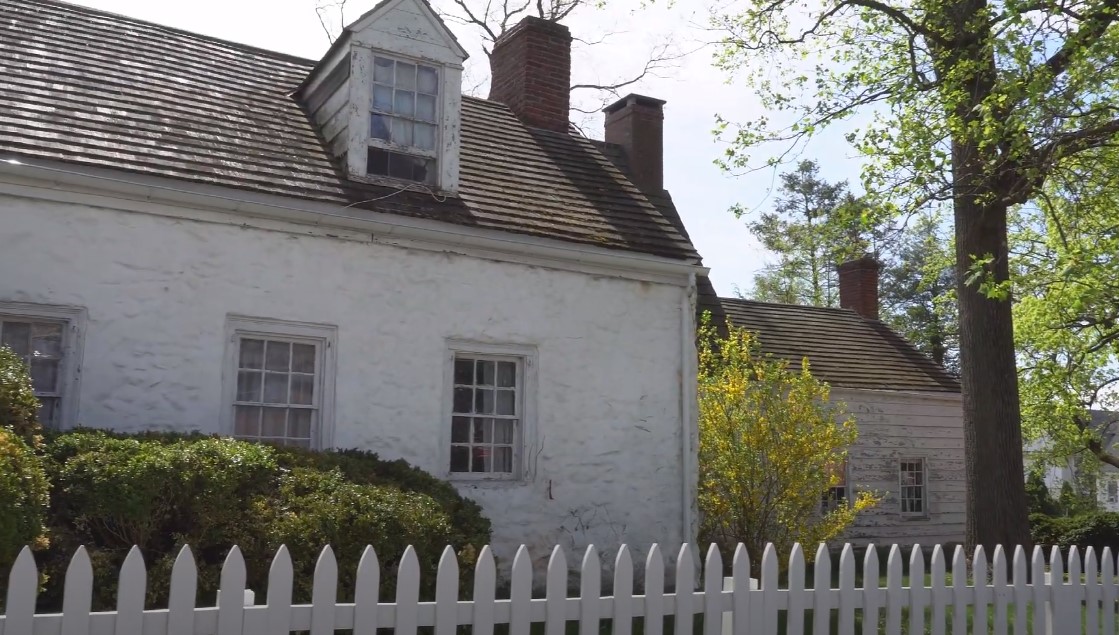
The time-honored residence on Staten Island represents the area’s earliest settlement history. Established by a founding settler from France in the mid 17th century, the dwelling is a testimony to the evolving architectural styles and uses over several centuries as per noted by the Library Of Congress.
As the house passed through generations, it saw multiple expansions that contributed to its complexity. It serves today not only as a historical landmark but also as a portal into the island’s storied past for occasional visitors.
- Construction Date: Around 1662
- Original Owner: Pierre Billiou
- Significant Expansion: Late 1600s to early 1700s by Thomas Stillwell
- Additional Structures: Added in the 18th and 19th centuries
- Current Status: Part of Historic Richmond Town, accessible to visitors on certain occasions
- Location: 1476 Richmond Rd, Staten Island, NY 10304
12. Staten Island: Britton Cottage
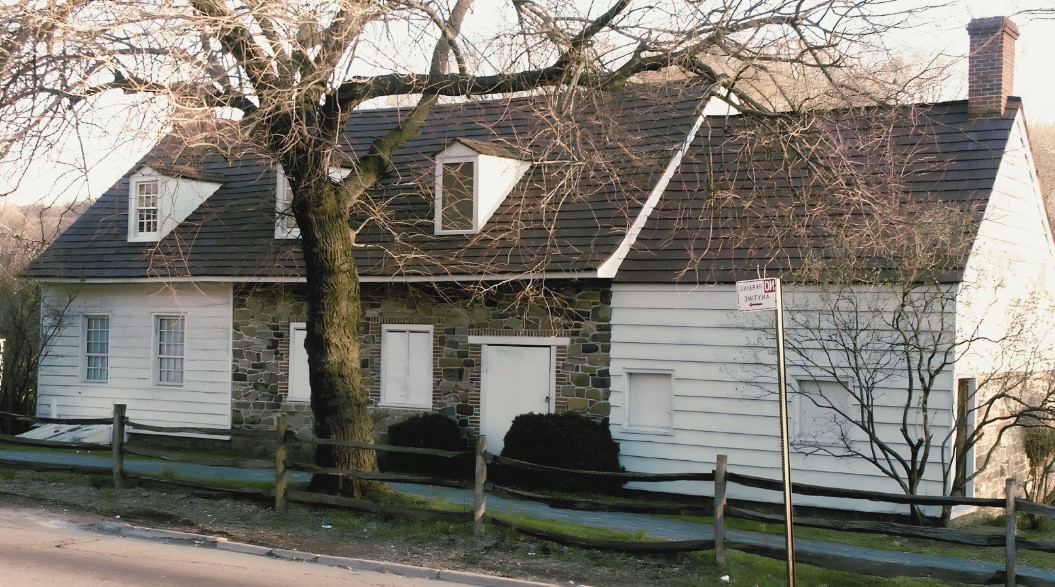
I am always captivated by the historical treasures nestled within Historic Richmond Town. Among these standouts is the Britton Cottage, an architectural gem mixing fieldstone and wood. Its foundation hearkens back to around 1670.
- Location: Historic Richmond Town, Staten Island
- Dating back to: Circa 1670
- Original location: New Dorp, Staten Island
- Built by: Obadiah Holmes (Judicial Clerk)
- Structural composition: Combination of fieldstone and wood
- Historical uses: Residential and likely judicial or governmental
Visitability: The cottage is currently closed to the public for restoration.
13. Staten Island: Conference House Park
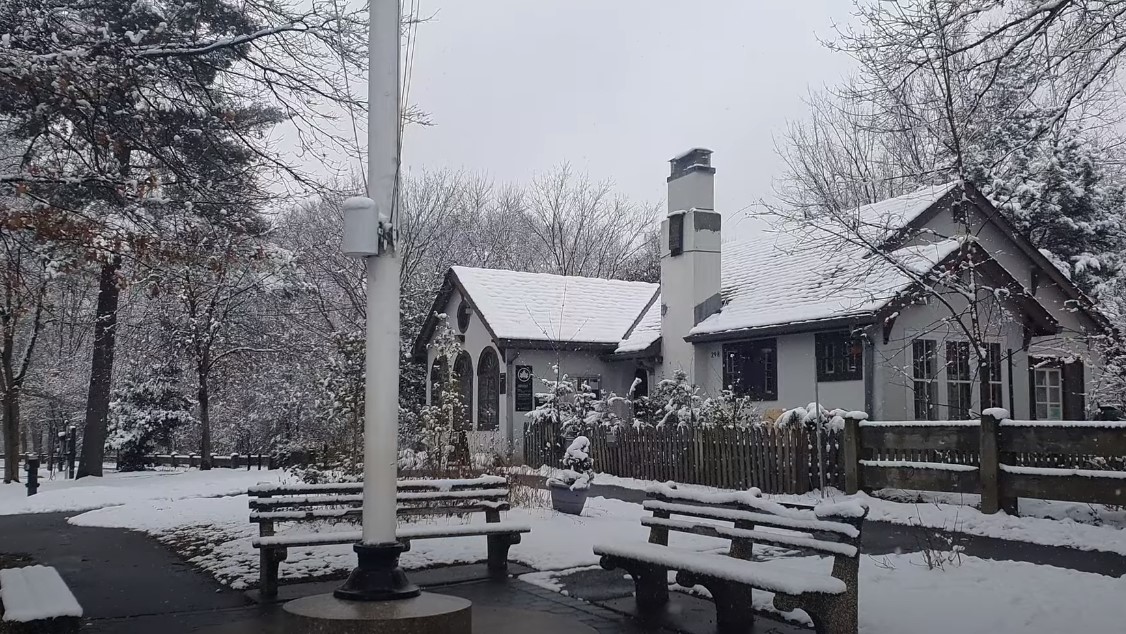
In an enduring landmark of Staten Island, the Conference House marks a notable historical moment. Constructed around the late 17th century by the mariner Christopher Billopp, the House remains largely unchanged since its initial erection according to Atlas Obcura.
It’s distinguished as the site of a pivotal, albeit unsuccessful, peace attempt during the Revolutionary War on September 11, 1776. This event featured illustrious figures such as Benjamin Franklin, Edward Rutledge, and John Adams who engaged with Lord Richard Howe in negotiations that could have altered the conflict’s direction.
- Historical Significance: Hosting the 1776 peace conference
- Construction Era: Circa 1680
- Preservation Status: Minimal alterations since the original build
- Accessibility: Open to visitors Friday through Sunday afternoons from April to mid-December
Walking the grounds of Conference House Park was a profound experience, knowing the pivotal peace conference that took place here. The house’s preservation as a near-original relic of the 17th century is remarkable. Yet, the visit left me longing for more interactive displays or reenactments to bring that historic day to life.
14. Staten Island: Alice House
The Alice Austen House, founded in 1690, showcases the work of an early American female photographer.
- Location: Staten Island, New York
- Historic Significance: Home to Alice Austen
- Features: Remarkable photographic collection
- Accessibility: Open for visits
15. The Bronx: Historical Valentine-Varian Residence
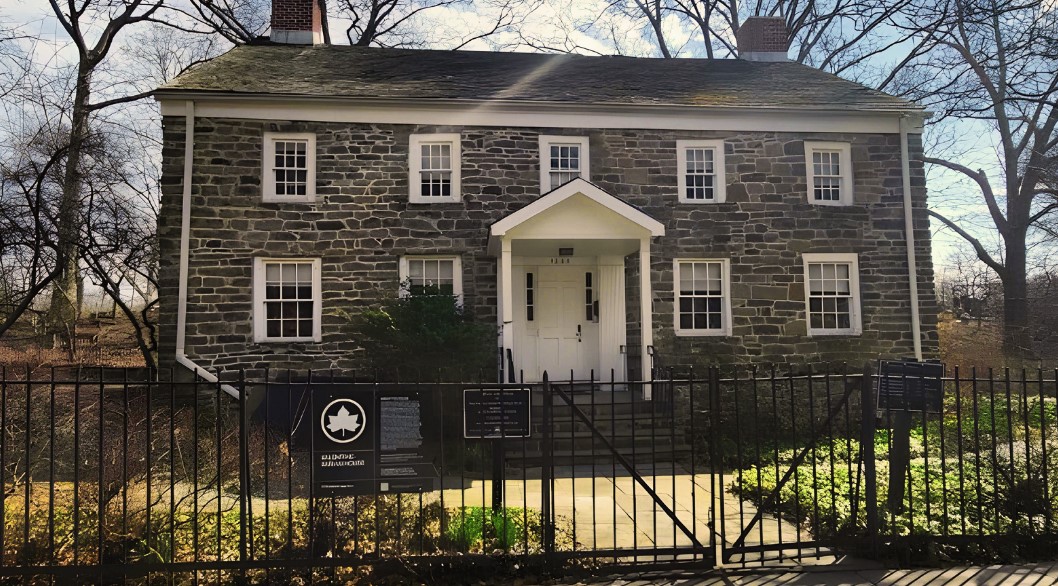
Constructed in the mid-18th century, the Valentine-Varian House stands as a testament to colonial architecture. Initially, the abode of blacksmith Isaac Valentine, it was conveniently located near the vital Boston Post Road as highlighted by Lehman College. Today, it is significant for containing the Museum of Bronx History, and it was turned over to the Bronx Historical Society in 1965.
- Date built: ca. 1758
- Original owner: Isaac Valentine, blacksmith
- Current use: Museum of Bronx History
- Historical significance: Proximity to Boston Post Road
- Location: 3266 Bainbridge Ave, Bronx, NY 10467
My explorations remind me of the richness of history that we can often overlook in the bustling city life. The Valentine-Varian House is more than just a building; it’s a gateway to understanding the complexity of the Bronx’s past and the broader narrative of New York’s development.
16. The Bronx: Edgar Allan Poe Cottage
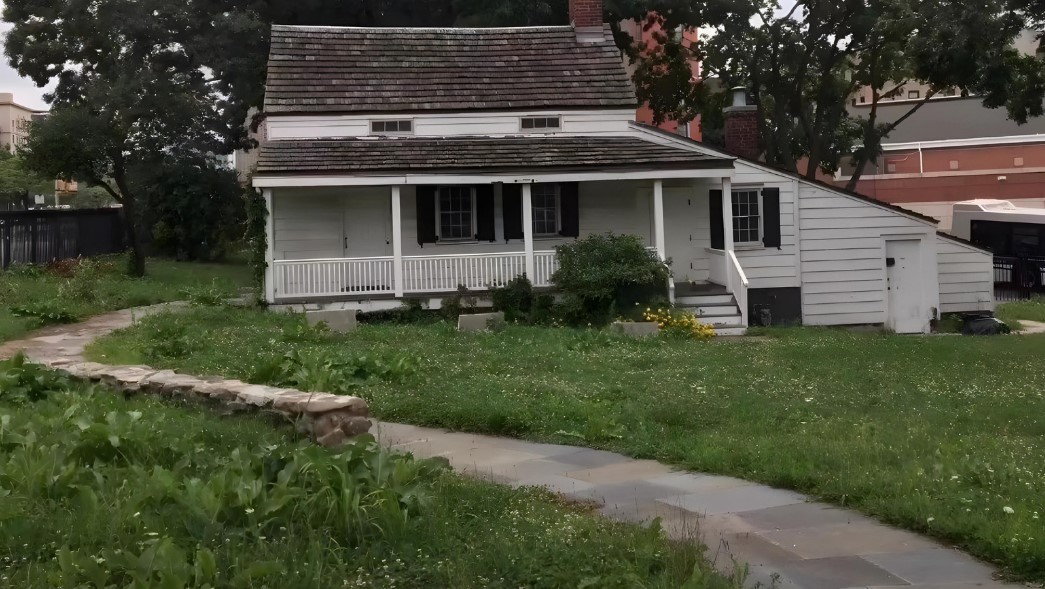
The Edgar Allan Poe Cottage, nestled in the Bronx, stands as a testament to the rich literary history of New York City. Constructed in 1816, this historic residence was once occupied by the illustrious poet Edgar Allan Poe, alongside his wife Virginia and her mother, from May 1846 until Virginia’s passing according to NYPL.
The couple resided in this modest dwelling, experiencing both creativity and tragedy, with Virginia succumbing to illness under layers of clothing in an attempt to keep warm.
Although Poe was residing here when he met his enigmatic end in Baltimore, the cottage itself was relocated to its present position in 1913 and now includes a modern visitor center and gallery, engrossing visitors in the narrative of Poe’s final years.
- Construction Year: 1816
- Notable Residents: Edgar Allan Poe and family
- Historical Significance: Third oldest building in the borough
- Current Features: Visitor center and gallery
- Relocation: Moved to the current site in 1913
- Location: 2640 Grand Concourse, Bronx, NY 10458
17. Historical Tobacco Landmark in the Bronx
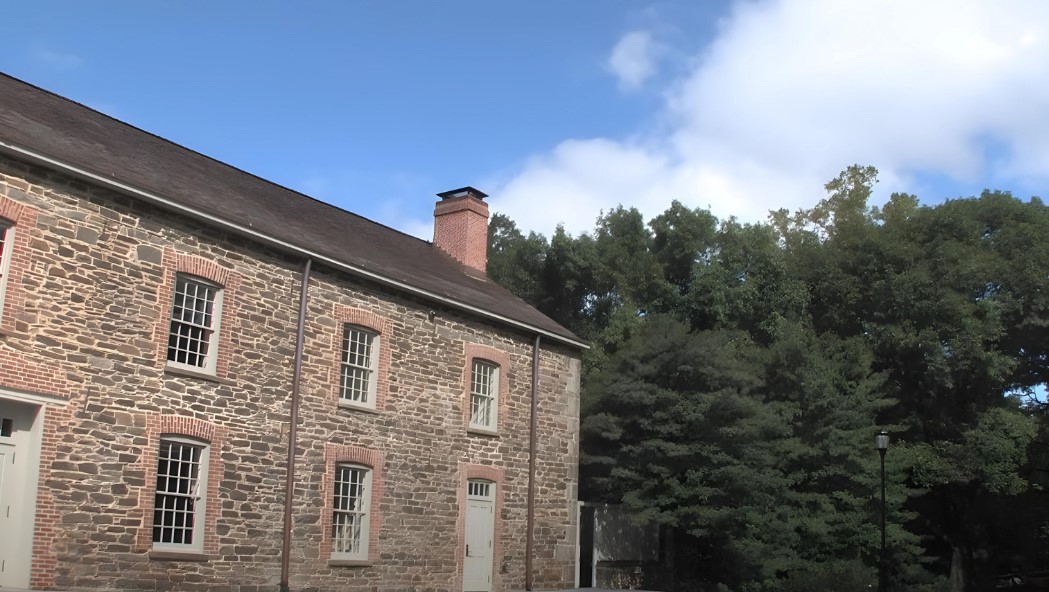
Constructed in 1840, the now-named Lillian and Amy Goldman Stone Mill claims distinction as the eldest surviving structure initially built for tobacco production within New York City’s limits. Nestled within the New York Botanical Garden, this enduring edifice also stands as a testament to America’s early tobacco industry history.
- Location: New York Botanical Garden, 2900 Southern Blvd, Bronx, NY 10458
Learning about its history as a tobacco mill and its transformation was intriguing. While the setting was picturesque, I found myself curious about the specifics of tobacco production and the daily operations of the mill, yearning for a more detailed exploration of its working life.
18. Morris Jumel Mansion in Manhattan
Constructed in 1765, the Morris Jumel Mansion stands as Manhattan’s most venerable residence. Initially, the home belonged to Roger Morris, a British loyalist. It’s famed for not only its architectural grandeur but as a historical site where George Washington strategically headquartered during 1776.
Later, Stephen Jumel acquired the property, and after his passing, his wife Eliza Jumel wed Aaron Burr, the former Vice President, in the home’s parlor in 1833. Presently, this preserved site offers tours and hosts a variety of temporary exhibitions.
Notable Events
- George Washington’s headquarters in 1776
- Eliza Jumel and Aaron Burr’s marriage in 1833
Visitation Details
- Access: Public tours available
- Exhibitions: Rotating temporary displays
19. Manhattan: St. Paul’s Chapel
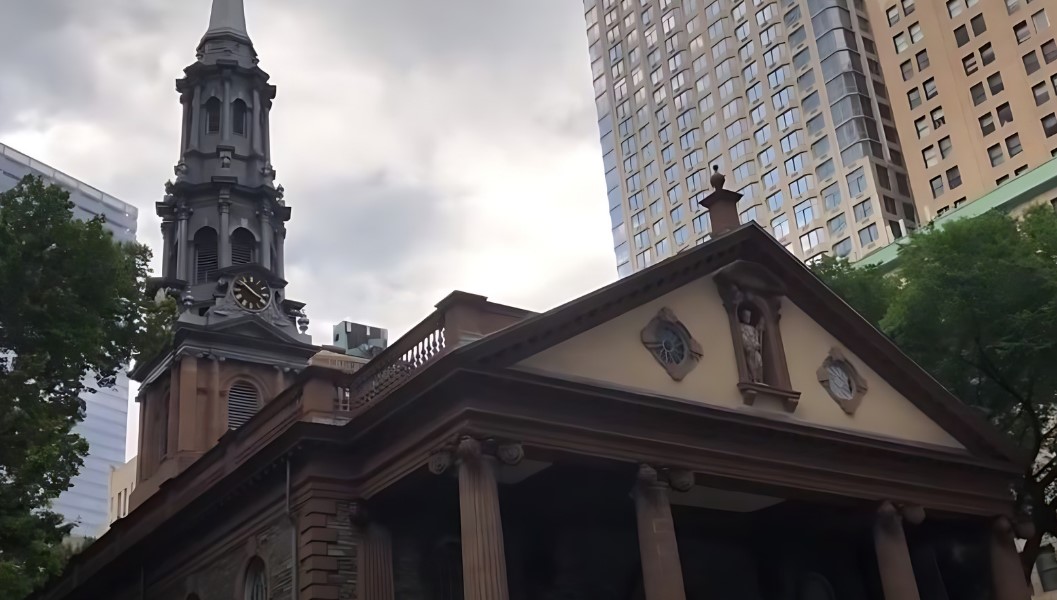
- Completion Year: 1766
- Architectural Significance: Prime example of Georgian ecclesiastical design
- Historical Usage: George Washington and Governor George Clinton attended services here
- Cultural Context: Part of Broadway’s “Holy Ground,” an area with a rich dual heritage
- Landmark Status: Recognized as Manhattan’s most ancient church structure
- Notable Features: Ornate pulpit decorations, possibly symbolizing the Prince of Wales; Washington’s faithfully maintained pew
20. Manhattan: Fraunces Tavern
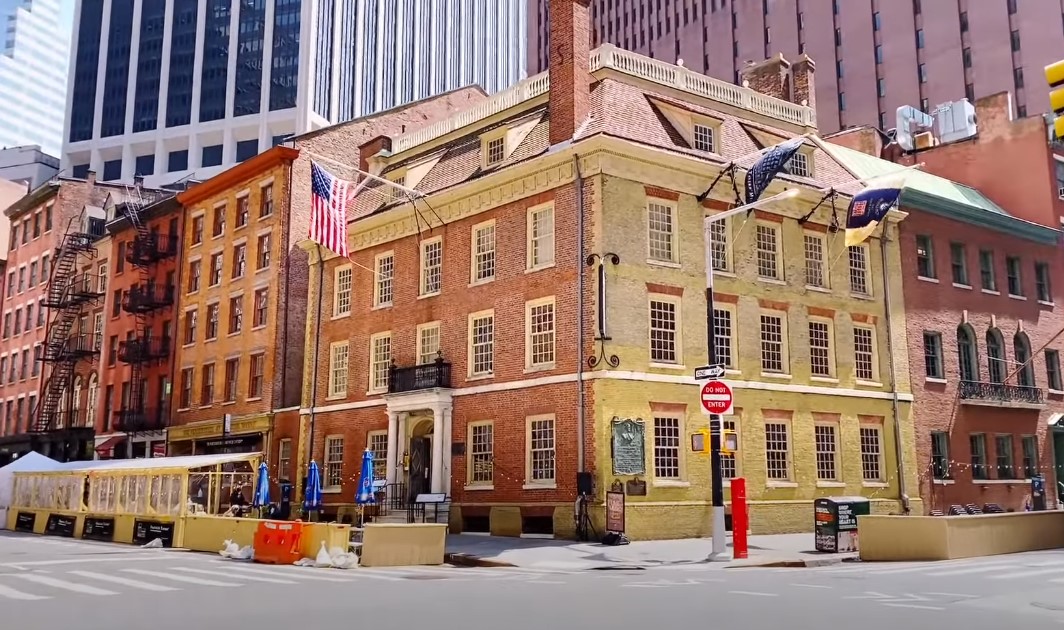
- Established: 1719 by Stephen Delancey
- Reconstructed: 1907, incorporating original elements
- Significance: A historic watering hole with a storied past
- Access: 54 Pearl St, New York, NY 10004
Fraunces Tavern, while predominantly a reconstruction dating back to 1907, holds within its walls a touch of the original essence from 1719. This famous inn, initially constructed by Stephen Delancey, has been meticulously rebuilt, incorporating several fragments of the original structure into the new edifice.
These preserved pieces serve as a tangible connection to the tavern’s rich history, blending the past with the present in a unique architectural homage. My visit to Fraunces Tavern was not just a step back into history but a journey into the social life of revolutionary America.
The tavern’s role in the country’s fight for independence was fascinating. Though the museum offers a wealth of information, I longed for more immersive experiences, like historical reenactments or themed evenings, to fully transport visitors back to the 18th century.
FAQ
- St. Paul’s Chapel (1766)
- Morris-Jumel Mansion (1765)
- Conference House (1680)
- Pieter Claesen Wyckoff House (1652)
- John Bowne House (1661)
These historic edifices serve as a window into the city’s early years and its evolving architectural styles.
Final Words
Exploring New York City’s historic landmarks has been a journey through time, connecting me to the city’s colonial past and the diverse narratives that have shaped its present. Each visit offered a unique insight into the lives of those who walked these streets centuries ago.
From the rustic charm of the Wyckoff Farmhouse Museum to the revolutionary spirit of Fraunces Tavern, these sites are not just static relics but vibrant portals to understanding the complex tapestry of New York’s history.
While I cherished the stories and the architecture, I often found myself longing for more interactive experiences to bring history to life.
Nonetheless, the preservation of these landmarks is a testament to the city’s commitment to honoring its past, ensuring that future generations can also walk in the footsteps of history.
Disclaimer
All information presented in this text is based on our own perspectives and experiences. The content is provided for informational purposes only and is a reflection of the personal views of the authors. It should not be taken as professional advice, nor should it be used as a basis for making significant decisions without consulting a qualified expert. We do not guarantee the accuracy or reliability of the information provided and shall not be held responsible for any inaccuracy, omissions, or inaccuracies. We highly recommend consulting with a qualified expert in the relevant field for personalized guidance or advice specific to your situation

